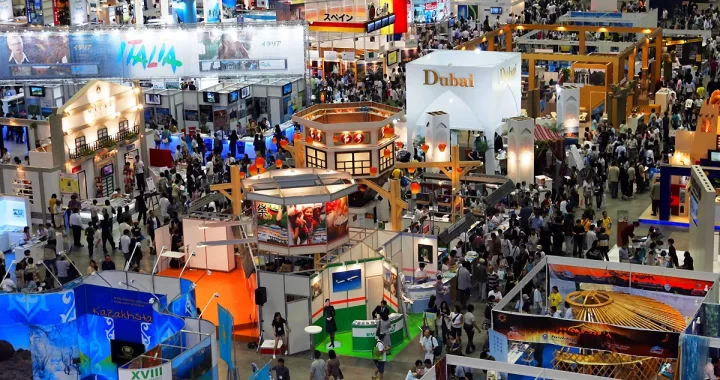Trade Show Staff Training for Remote Teams: The Ultimate Guide to Bridging the Distance

The trade show floor is a sensory overload. The buzz of conversation, the glare of screens, the handshakes—it’s a high-stakes, high-touch environment. And if your team is scattered across time zones, the idea of preparing them for that chaos can feel… daunting. How do you replicate that energy in a Zoom room? How do you build the spontaneous chemistry that wins deals?
Honestly, you don’t replicate it. You reinvent it. Training a remote team for a trade show isn’t about copying an in-person model. It’s about leveraging your unique distributed strengths to create a presence that’s even more focused, responsive, and, frankly, impressive. Let’s dive in.
Why Remote Team Training is a Different Beast
First, let’s acknowledge the elephant in the (virtual) room. You can’t walk over to someone’s desk for a quick chat. You miss the body language, the side conversations where real learning often happens. The challenge isn’t just the content; it’s the connection.
That said, remote training has some secret weapons. It forces intentionality. Every piece of communication, every process, has to be documented and clear. No winging it. This creates a level of consistency that geographically unified teams sometimes lack. Your goal is to turn physical separation into strategic alignment.
Laying the Groundwork: Pre-Training Essentials
Before you schedule a single training call, you need a foundation. This is where most remote efforts fail—they jump straight into the “what” without setting the “why” and “how.”
Define Your “One Thing”
Every staff member, from the seasoned sales vet to the new marketing hire, should be able to answer this question: “If we accomplish only one thing at this show, what is it?” Is it generating 500 qualified leads? Launching a new product? Shifting market perception? This singular focus becomes your North Star for all decision-making on the floor.
Build Your Central Command Hub
Scrambling through Slack, email, and shared drives is a recipe for disaster. You need one single source of truth. This could be a dedicated Slack channel, a Microsoft Teams site, or a project management tool like Asana or ClickUp. This hub should house everything:
- The master show schedule
- Booth staff roster and contact info
- Product one-pagers and battle cards
- Lead capture process docs
- Emergency contacts and logistics
Think of it as your mission control. If it’s not in the hub, it doesn’t exist.
The Core Training Modules: What to Cover (and How)
Okay, now for the meat of it. Your training sessions need to be modular, interactive, and—this is key—asynchronous where possible. Not everyone needs to be on a live call for everything.
Product & Messaging Bootcamp
This isn’t just a product demo. It’s about crafting the perfect elevator pitch for a noisy environment. Record short, snappy videos (under 5 minutes) for each key product or service. Then, host a live Q&A session where team members can practice delivering the message and get feedback.
Role-playing is your best friend here. Use breakout rooms to simulate booth interactions. One person plays the distracted attendee, the other the staffer. It feels awkward, sure, but it builds muscle memory that pays off when fatigue sets in on day three of the show.
Lead Qualification & Capture Process
A lead scrawled on a napkin is useless to a remote team. You need a seamless, digital-first process. Train everyone extensively on your chosen tech—whether it’s a simple QR code to a form, a badge scanner app, or a full-blown CRM integration.
Create a simple tiering system for leads. For example:
| Hot Lead | Ready for a demo; has budget & authority. | Action: Schedule follow-up meeting before leaving the booth. |
| Warm Lead | Interested but needs nurturing. | Action: Add to email nurture sequence with specific show tag. |
| Information Seeker | Wants a brochure, no immediate need. | Action: Add to general newsletter list. |
Booth Logistics & “Remote Swarm” Protocol
Who is covering the booth and when? For remote teams, you need a virtual “hand-off” ritual. This could be a quick 5-minute video huddle at shift change to pass on key intel: “Hey, I just spoke with a major prospect from Acme Corp, they’re interested in X and will be back at 3 pm.”
Establish a “remote swarm” protocol. If a high-value prospect enters the booth, how does the on-site team signal the remote experts? A quick coded message in the command hub? A quick call? Define it, practice it.
Leveraging Technology for Cohesion
Your tech stack is your lifeline. It’s the difference between a unified front and a chaotic mess.
- Walkie-Talkie Apps (like Voxer or Zello): Perfect for instant, low-friction communication between the booth team and remote managers. Faster than typing.
- Cloud-Based Document Sharing: Ensure every product sheet and pricing doc is live-updated. No one should be working from an outdated version.
- Virtual Booth Tours: For team members who can’t visit the physical booth beforehand, create a 360-degree video walkthrough. It helps them visualize the space and feel more grounded.
Fostering Team Chemistry—From Afar
This might be the most overlooked part. You can’t force camaraderie, but you can create the conditions for it to grow. Schedule virtual “coffee chats” for team members to get to know each other beyond their job titles. Host a fun, non-work related trivia night focused on the trade show’s host city.
The little things matter. Encourage the use of video profiles in the command hub. A face and a voice create a human connection that text alone never can. It transforms a username into a colleague.
The Final Dry Run & Post-Show Debrief
A week before the show, conduct a full-scale simulation. Run through every scenario, from a tech failure to a surprise visit from a competitor. This isn’t about being perfect; it’s about identifying the gaps in your plan while there’s still time to fix them.
And after the last booth is dismantled? Your work isn’t done. The post-show debrief is arguably more important for a remote team. Schedule a “Lessons Learned” session within a week, while memories are fresh. What worked? What broke? Document it all. This creates a playbook, a living document that makes your next remote trade show training even stronger.
In the end, training a remote team for a trade show is a testament to modern work. It proves that physical presence is no longer the sole ingredient for success. Intentionality, clear process, and a focus on human connection are. When you get it right, your team won’t just be representing your company—they’ll be redefining what a modern, agile, and truly connected workforce looks like.











